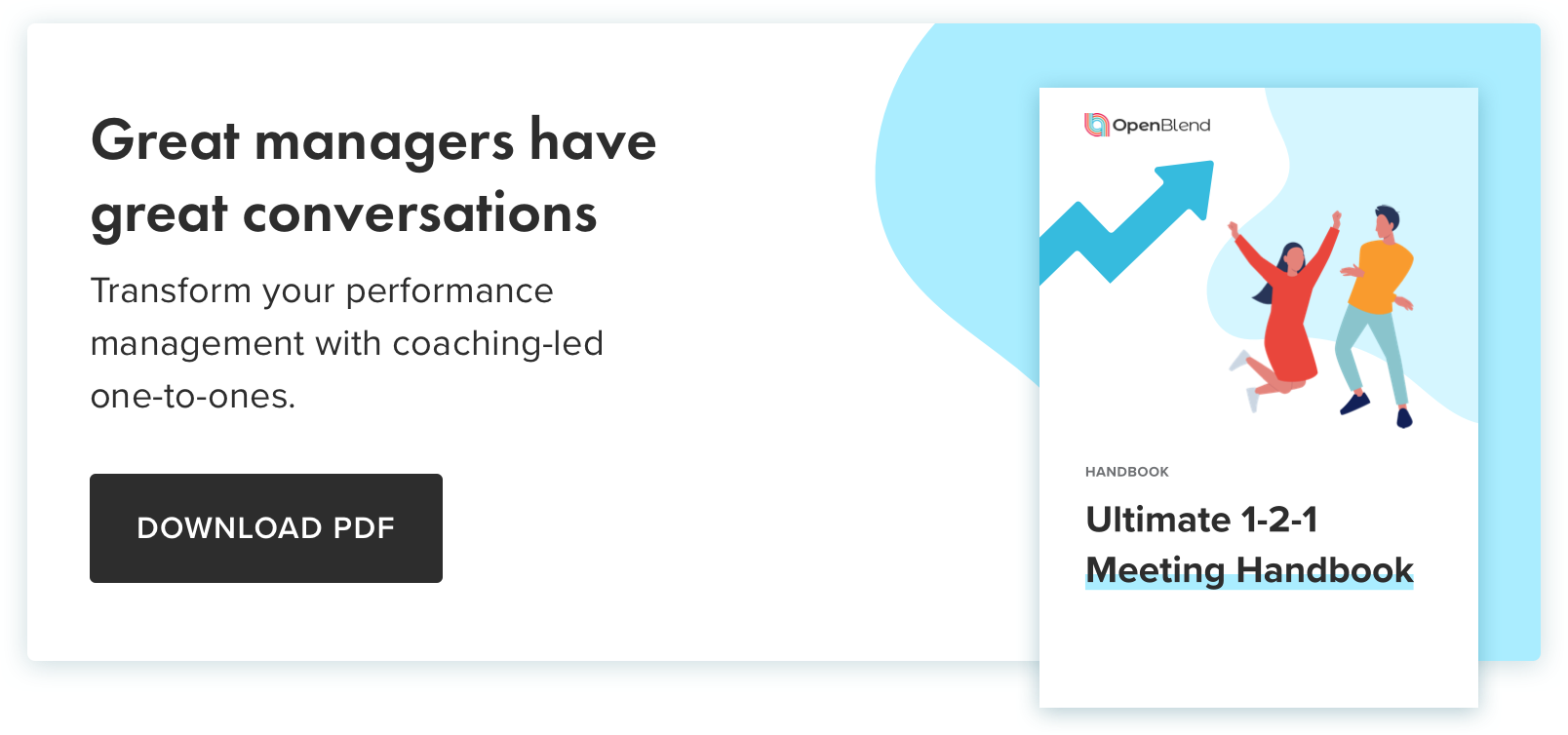Ask yourself this before we get started, 'How holistic are your one-to-ones?'
Do you compartmentalise your conversations, focussing only on output, results and productivity metrics? Or do you try to keep sight of the bigger picture, using your one-to-one meetings to get greater insight into your employees as a complete person, not just their job title?
Holistic conversations are at the heart of people-centric performance management, providing managers with a way to unlock productivity and enable every employee on their team to achieve their full potential. Yet despite the gradual shift to people-centric management techniques that we’ve seen in recent years, many management conversations still fail to delve deeper into individual drivers and motivations and take a truly ‘holistic’ approach.
What does holistic mean?
In medicine, a holistic approach considers the patient as a whole, taking into consideration mental, social and environmental factors rather than just the symptoms of a disease. In management, it’s much the same: a holistic approach doesn’t just look at the employee’s output or performance: it looks at all the factors that may be affecting them, from their lifestyle and priorities to their mental health and working environment. It’s the understanding that, in order to really get to know a person, you need to see the complete picture, not just one part (i.e., their work performance) in isolation.
What does holistic mean in performance?
To drive productivity in the modern workforce, managers need to have holistic conversations that address every aspect of the employee: from their stress and happiness levels to their workload and home life.
Every individual has a different set of circumstances and is driven by different motivations: some professional, like career progression, others personal, like time with their family. It’s only by instigating open, honest conversations to understand the complete person that managers can uncover these drivers. For instance, a person struggling to balance their workload with childcare won’t be motivated to perform better by simply setting work-based objectives, as it fails to address the issue at the heart of the productivity problem.
There’s more to motivation than objective setting
Clear deliverables create a sense of purpose but limiting these to work-based objectives won’t unlock anyone’s full capability. Holistic management conversations also require measurable metrics around motivation and wellbeing that help employees balance their work/life balance. With regular constructive feedback, the manager and the employee can work together to unlock performance and reach holistic goals.
How can you enable employees to talk about their ‘whole self’?
You can’t talk about everything in a 30-minute one-to-one. However, you can provide employees with a framework that enables them to distil the things that are currently important to them into talking points for each session.
A typical OpenBlend 1:1 is a good example of a holistic conversation that goes beyond performance objectives. They are employee-led, and enable the individual to outline their motivators, identify their challenges and discuss their wellbeing, both inside and outside of work, so their manager can get a clearer portrait of the ‘whole person’ and what drives them. Managers are supported with coaching frameworks and coaching prompts to ask the right questions. To find out more about incorporating a holistic approach into your one-on-one conversations and understand the impact of individual drivers on performance download the Blend Drivers Guide, or book your demo here.
